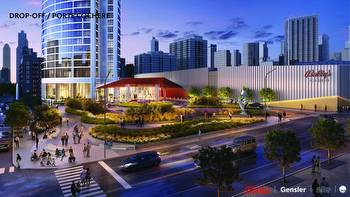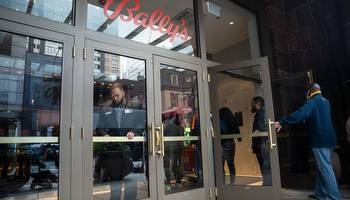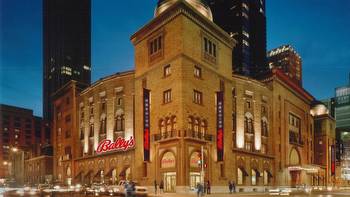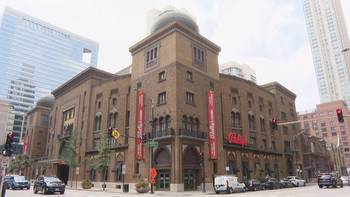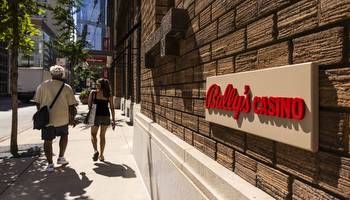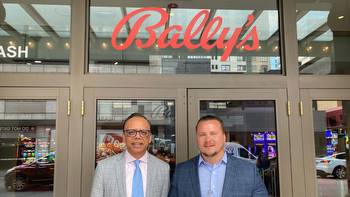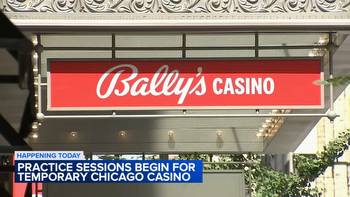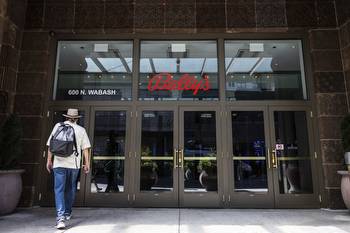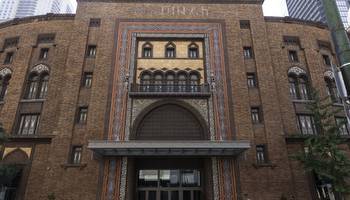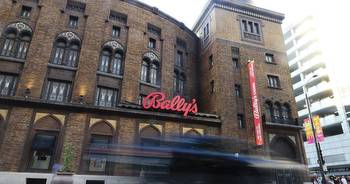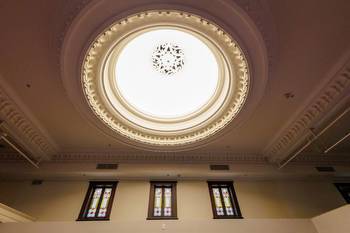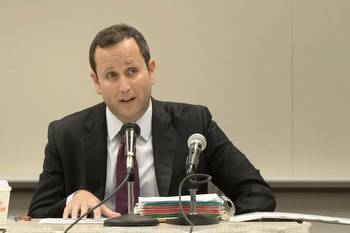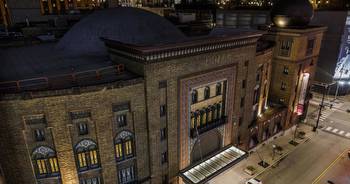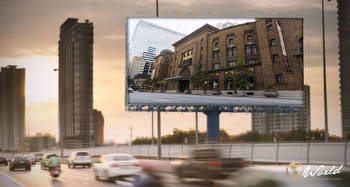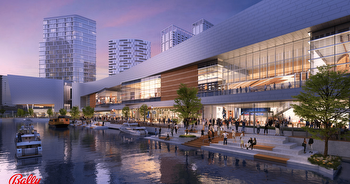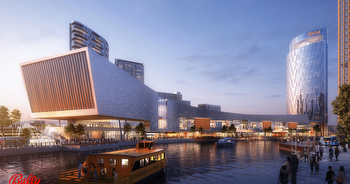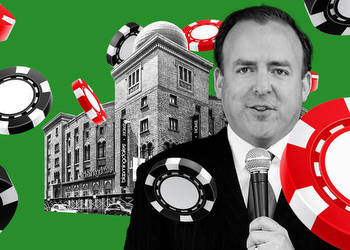Sneak peek: Bally’s turns Medinah Temple into a gambling mecca

Days after getting preliminary approval from the state, Bally’s Chicago has moved hundreds of slot machines and table games into place at the landmark Medinah Temple, which is set to be reborn this summer as a temporary Chicago gambling mecca.
The River North building, a Moorish-style amphitheater perhaps best known for hosting the annual Shrine Circus, is quickly being transformed into Chicago’s first casino, while preserving elements of its colorful 111-year history.
“It’s probably the best-looking temporary casino you’ll ever see,” said Chris Jewett, director of corporate development for Bally’s, during a tour Tuesday. “It’s a wow factor just walking in. It’s unique.”
Granted preliminary approval last week by the Illinois Gaming Board — a precursor to final licensing — Bally’s Chicago began installing more than 750 slot machines and 50 gaming tables almost immediately. It expects to have all the equipment in place and the roughly 1,000 gaming positions laid out by the end of the week.
Rhode Island-based Bally’s won a heated competition last year to build a $1.74 billion casino at the 30-acre site of the Chicago Tribune printing plant in River West. It plans to open the permanent casino in 2026.
Medinah Temple will serve as a temporary casino for up to three years while the permanent facility is built. Bally’s hopes customers can begin pulling slot levers and splitting aces by August, pending Gaming Board approval.
Built by the Shriners in 1912, the Medinah Temple was designed by architecture firm Huehl and Schmid. Over the years, the venue hosted everything from concerts and high school graduations to the annual Shrine Circus. Amenities included a 30,000-pound pipe organ installed in 1915.
The building, which occupies nearly a block on Wabash Avenue, was designated a Chicago landmark in 2001. It was redeveloped as a Bloomingdale’s home furnishings store in 2003 but had been vacant since Macy’s sold it to Chicago developer Albert Friedman in 2019.
Bally’s Chicago has been renovating the historic 130,000-square-foot Medinah Temple since January.
“We basically knocked down 90% of everything that was in here when it was Bloomingdale’s,” said Mark Wong, a veteran casino executive named vice president and general manager of Bally’s Chicago in August. “This is new construction.”
While much of the heavy lifting took place earlier in the year, the transformation has accelerated in recent days after getting the green light from the Gaming Board.
On Tuesday, dozens of hard-hatted workers in yellow vests carted slot machines in on dollies, placing them in marked spots near electrical stands where they will be mounted. Gaming table bases found a home on the two upper floors, wrapped in plastic with small placards indicating their designated purpose, awaiting the tops that make them ready to play.
“We have 75% of the slot machines and table games loaded in,” Wong said. “By the end of the week we’ll have everything. Then it’s just a matter of installing, testing.”
The main entrance on Wabash Avenue opens onto an expansive, modern blue-lit center bar. An abundance of slot machines are scattered across the first floor. The ground level also includes a coffee shop and an atrium looking up to the ornate rotunda lined with inset stained glass windows.
The second floor includes half of the table games, set down on spaces marked with blue tape on a swirling carpet of blue, red and orange. It also features hundreds of slot machines and an element seldom found in casinos — windows, or more precisely, 111-year-old stained glass windows.
The historic windows are cordoned off by a low glass partition to enable close viewing without touching — a preservation requirement from the Commission on Chicago Landmarks.
“It was important for us to have on display some of the original architectural elements of the building,” Wong said. “We purposely put a wall here to protect them, but at the same time make sure that our customers will enjoy this very unique experience here.”
The third floor is home to the rest of the table games, more slot machines, two restaurants and a planned sportsbook, which Bally’s hopes to open in 2024, pending Gaming Board approval.
Other historic touches include the theater proscenium, which long framed eclectic offerings on the auditorium stage. The curtain is drawn, but backstage is where back office administrative functions will take place, Wong said.
Modern amenities include six new brightly-lit washrooms.
Bally’s is also considering a large display on the inaccessible but visible lower level paying homage to Medinah Temple’s history, with renderings and models of the permanent casino to come, Jewett said.
The permanent facility will include an exhibition hall, 500-room hotel, a 3,000-seat theater, 10 restaurants and 4,000 gaming positions — by far the largest casino in the state.
Bally’s had planned to use an adjacent Tribune Publishing warehouse at 700 W. Chicago Ave. as its temporary casino while Freedom Center is demolished and the permanent facility is built, but the city pushed for Medinah Temple as an alternative, sources said.
At the time, Bally’s chairman Soo Kim told the Tribune he was “not crazy” about switching to Medinah Temple, a sentiment shared by some River North neighbors. Concerns included the lack of on-site parking.
On Tuesday, Jewett said the Medinah buildout has exceeded expectations.
“I think this is a much better experience than you would have gotten from a warehouse,” Jewett said.









